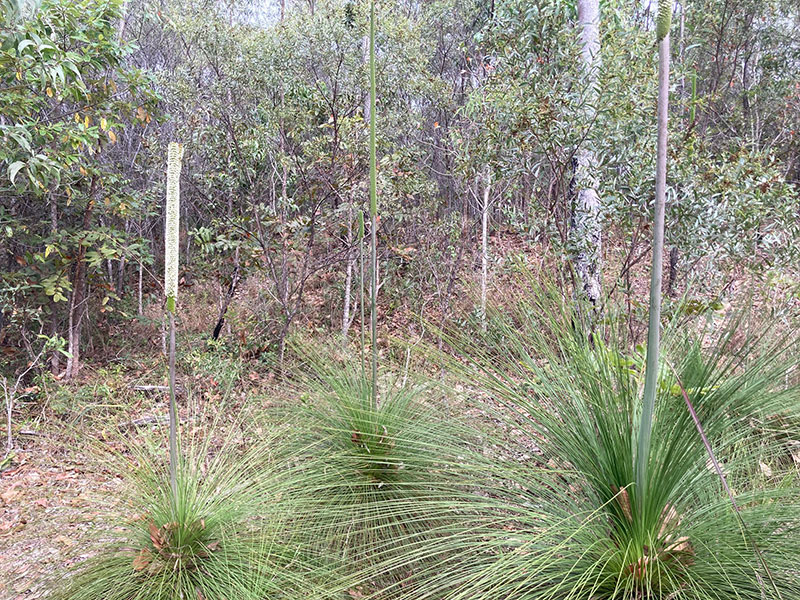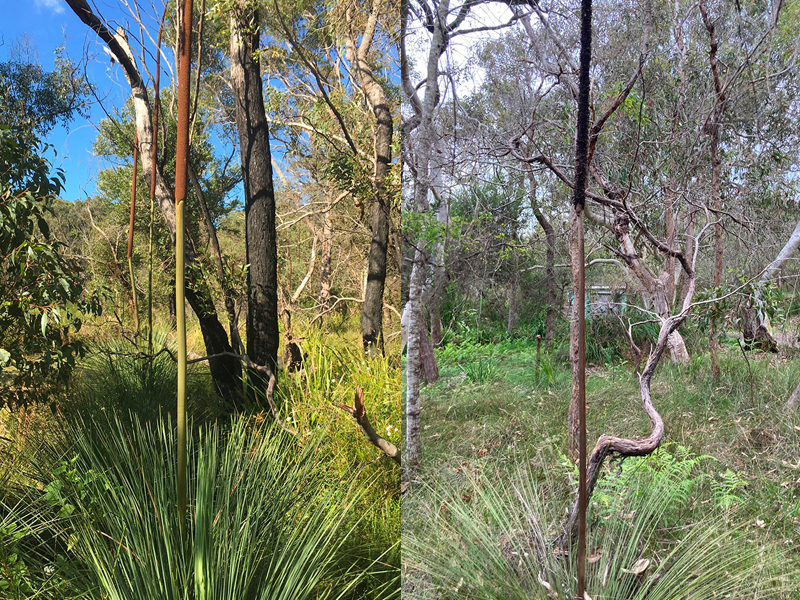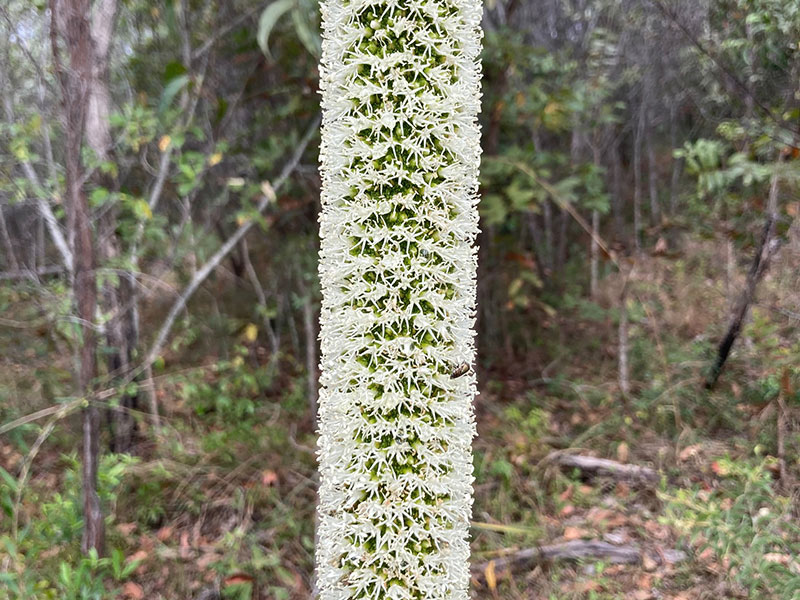Grass Tree
Grass Tree (Xanthorrhoea spp.)
Family: Xanthorrhoeaceae
Size: up to 4m
Description: Very distinctive slow growing perennial grass like plants with either above ground woody trunks and stems up to 4m, covered with long narrow leaves forming a crown at the top of the trunk which looks like a grass skirt (X. Johnsonii, X. australis) or a below ground trunk/stem (X. macronema, X. resinosa). All have distinctive spear like flower spikes of various lengths.
Habitat: Found in a variety of habitats from dry rocky sandstone ridges (X. media, X. australis), swampy heathlands with sandy soils (X. fulva, X. resinosa) and in shaded eucalypt forest on coastal sandy soils (X. macronema, X. latifolia).
Foliage: All grass trees have a crown of leaves emanating from the woody trunk (either above or below ground) which looks like a grass skirt. The stiff dark green leaves (up to 1.2m long x 6mm) have white leaf bases and are triangular to rhombic in cross section at the midpoint of the leaf.
Flowers: Creamy white strongly scented flowers on a terminal spike (from winter to summer) producing copious amounts of nectar. All flower spikes and scapes (stalk) vary between species and all emanate from the centre of the trunk and leaf base.
X. Resinosa – velvety dark brown spike to 1.6m, scape to 2m x 30mm. X. macronema – smooth (glaborous) spike to 3-12cm on slender scape up to 1.6m x 5mm. Large yellow flowers have a bottlebrush appearance.
Distribution: There are 28 species of Grass Tree in Australia. VIC, SA, WA, QLD, TAS and 13 occur in NSW.
Uses: Most grass tree species have similar uses depending on whether or not they have an above ground or below ground trunk: Edible leaf bases (very fibrous). Immature seeds and flowers are edible (seeds must be roasted). Edible terminal bud (kills the tree). Rhizomes traditionally eaten in winter after pounding and roasting. Flower nectar can be collected and mixed with warm water to make a sweet drink, it can also be fermented. Flower stems were used as spear shafts, the dead flower stems make excellent friction fire sets (thicker stems for bow drill, thinner stems for hand drill). Leaves for making baskets. Edible grubs can be found in dead grass tree trunks. Resin globules can be found at the bases of many above ground grass tree trunks, particularly abundant after bushfires (amount of resin varies between species), the resin can be melted and mixed with a binding agent such as charcoal, sand or beeswax to make an adhesive that is used for fixing spear points to shafts or other tools, varnish can be made from the resin to protect wood, resin is flammable and can be mixed with fat to make candles, dead trunks due to their resin content burn well. Grass trees also have many medicinal uses.





